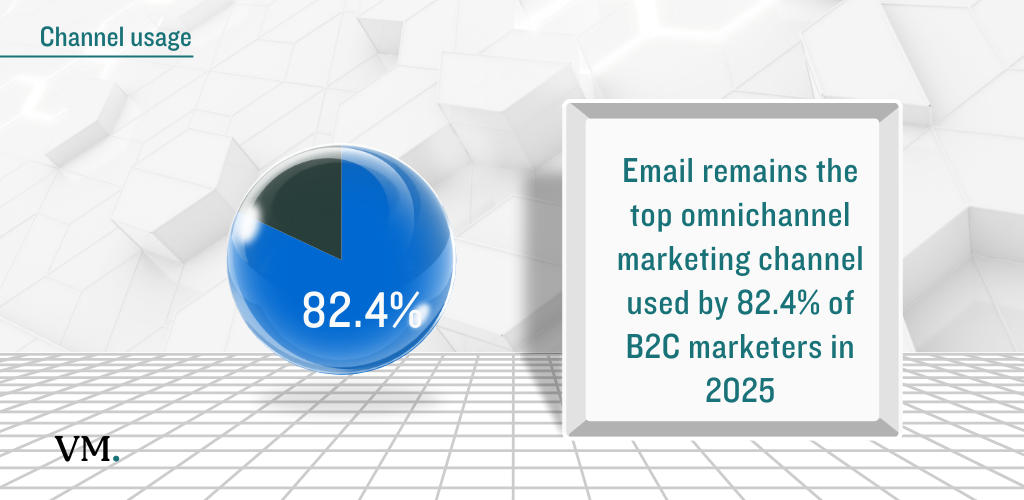Omnichannel SEO is an essential marketing strategy for modern businesses aiming to create a consistent and seamless customer experience across multiple digital platforms. Unlike traditional SEO, which focuses largely on optimizing a single website, omnichannel SEO integrates multiple channels—such as social media, email, mobile apps, voice search, video, and local listings—into a unified approach to engage customers at every stage of their journey.
What is Omnichannel SEO?
Omnichannel SEO means optimizing content and brand presence across all channels customers use to interact with a business. The goal is to ensure that whether a customer finds a brand on social media, through a voice assistant, or on a website, they encounter a consistent message and smooth transition across platforms. This approach boosts search engine rankings, enhances brand recognition, and delivers a superior user experience.
Key Differences Between Omnichannel SEO and Traditional SEO
- Scope: Traditional SEO targets organic traffic to a specific website, while omnichannel SEO covers multiple platforms and touchpoints.
- User Journey Focus: Omnichannel SEO maps the entire customer journey across channels, recognizing how prospects move between platforms before converting.
- Customer Engagement: It fosters deeper relationships through consistent messaging and personalized experiences, rather than just attracting website visitors.
- Optimization Tactics: Beyond website optimization, omnichannel SEO includes social media optimization, video and image SEO, voice search, local SEO, and integration of AI tools.
Steps to Create an Omnichannel SEO Strategy
- Unify Brand Voice and Identity
Maintain consistent messaging, tone, and visual elements across all platforms—from your website to social profiles and marketing emails. - Develop Multichannel Content
Tailor content for each channel, such as blogs for your site, short videos for social media, and newsletters, while keeping the core message aligned. - Optimize SEO Across Channels
Apply relevant keywords, meta tags, and headers on your website; optimize social media posts with hashtags and keywords; and include local SEO for brick-and-mortar locations. - Design for User Experience (UX)
Ensure mobile responsiveness and seamless navigation on all digital properties to enable easy transitions between devices and channels. - Integrate Data Analytics
Use analytics tools to track customer interactions across channels. Analyze data to personalize content, identify high-performing keywords, and optimize the customer journey. - Technical SEO and Infrastructure
Fix crawling and indexing issues, improve page speed and Core Web Vitals, implement schema markup, and ensure accessibility compliance to enhance search visibility. - Engage and Optimize for Conversion
Deliver personalized experiences using unified customer data, deploy AI agents for interaction, and implement A/B testing to refine messaging and UI/UX. - Continuously Measure and Adjust
Establish cross-channel performance dashboards, apply attribution models, test new integrations, gather customer feedback, and adapt to algorithm changes.
Benefits of Omnichannel SEO
- Improved Customer Experience: Offers a fluid, connected brand experience that keeps customers engaged across all touchpoints.
- Stronger Brand Awareness: Consistent messaging increases recognition and fosters loyalty.
- Greater Personalization: Integrated data allows for hyper-personalized marketing tailored to individual preferences and past behavior.
- Higher Customer Retention: Seamless experiences encourage repeat business and build long-term relationships.
- Competitive Advantage: A unified approach creates a superior shopping experience that differentiates your brand.
- Increased Sales and Revenue: Omnichannel customers tend to spend more due to seamless interactions and personalized offers.
Important Elements of Omnichannel SEO
- Social Media SEO: Link social profiles to your website, engage actively, optimize posts with keywords and hashtags, and use rich media like images and videos.
- Image and Video SEO: Optimize images with descriptive alt text and captions; upload keyword-rich titles and metadata for videos to boost visibility on platforms like YouTube.
- Voice Search Optimization: Tailor content for voice queries from digital assistants such as Siri and Alexa.
- Local SEO: Optimize content and keywords for local searches to attract nearby customers effectively.
Current Statistics and Trends in Omnichannel SEO (2025)
In 2025, omnichannel SEO has become a cornerstone of digital marketing strategies, reflecting shifts in technology, consumer behavior, and search engine algorithms. The statistics and trends below highlight the scale, importance, and evolving nature of omnichannel SEO in driving business success.
Market Growth and Industry Impact
-
The global SEO market was valued at $82.3 billion in 2023 and is projected to reach $143.9 billion by 2030, growing at a compound annual growth rate (CAGR) of 8.3%. Mobile SEO, a key subset of this market, is expected to grow even faster at a 10.0% CAGR by 2030.
-
Search advertising spending is also booming, with forecasts projecting a rise to $483.5 billion by 2029, reflecting robust investment in search-related marketing due to its high ROI.
Channel Usage and Integration
-
Email remains the top omnichannel marketing channel used by 82.4% of B2C marketers in 2025, followed by social media (66.7%), mobile websites (58%), desktop websites (52.7%), and mobile apps (51.6%).
-
On average, B2C marketers utilize at least five channels to effectively engage customers, emphasizing the importance of integrating SEO across various platforms to create unified experiences.

Customer Expectations and Personalization
-
Personalization is critical, with 71% of consumers expecting personalized experiences, while 76% find generic content frustrating. Businesses that prioritize personalization can see up to a 40% increase in revenue through targeted omnichannel efforts.
-
Brands with strong omnichannel strategies retain 89% of their customers, compared to only 33% retention for those with weak or no omnichannel focus. This clearly shows the power of integrated marketing for customer loyalty and retention.

SEO-Specific Trends Influencing Omnichannel Success
-
Despite the rise of AI and generative language models, 99% of users still rely on search engines like Google, maintaining SEO’s dominant role as a traffic source.
-
The shifting search landscape includes zero-click searches and a rise in multi-modal search formats (images, videos, voice). Therefore, optimizing content beyond traditional text-based web pages—like video SEO, voice search optimization, and rich media SEO—is essential.
-
The decline of third-party cookies has increased the challenge of tracking users across channels. An omnichannel SEO strategy that centralizes data collection and customer intent mapping is imperative to overcoming this challenge and maintaining effective attribution.
AI and Advanced Technologies
-
The emergence of the “agent economy”—where AI agents connect customer touchpoints across platforms—enables marketers to deliver highly unified and personalized experiences, reinforcing the need for omnichannel SEO integration.
-
AI-driven personalization and automation tools help marketers dynamically tailor content at scale, boosting engagement and conversion rates.
Practical Omnichannel SEO Benefits
-
SEO integrated into an omnichannel strategy drives better visibility across platforms, reinforces brand authority, and ultimately increases conversions by meeting customers wherever they engage.
-
Combining local SEO with paid ads and social commerce optimizations provides a significant advantage for businesses focusing on hyperlocal or socially driven purchase pathways.
These statistics underscore how omnichannel SEO in 2025 is not simply about optimizing one platform—it’s about orchestrating a seamless, personalized experience across all digital touchpoints. Businesses that embrace this unified approach are seeing measurable gains in customer retention, revenue, and market share.
Wrapping It Up
Implementing a comprehensive omnichannel SEO strategy is crucial for any business wanting to thrive in today’s multi-platform digital environment. It enables brands to meet customers wherever they are, deliver consistent and personalized messaging, and ultimately drive better engagement, loyalty, and revenue.
By mastering omnichannel SEO, businesses gain a competitive edge and build stronger, lasting relationships with their audience.
FAQ
What is omnichannel SEO?
Consumers engage with brands on multiple channels before making decisions. Omnichannel SEO ensures a consistent and personalized experience across all of these, which improves customer engagement, retention, and conversion rates while boosting brand visibility and SEO performance.
How does omnichannel SEO differ from traditional SEO?
Traditional SEO focuses mainly on optimizing a single website to rank higher in search engines. Omnichannel SEO spans multiple platforms and channels, emphasizing a unified brand experience throughout the entire customer journey across these touchpoints.
Why is omnichannel SEO important?
What channels are typically involved in omnichannel SEO?
Key channels include websites, social media platforms, search engines, mobile apps, email marketing, local business listings, video platforms, and increasingly voice search and AI-powered search engines.
How does integrating SEO across channels improve user experience?
It delivers a consistent brand message, smooth transitions from one platform to another, tailored content for each channel, and personalized interactions, all of which make the customer journey frictionless and satisfying.
What are some key steps to implement an omnichannel SEO strategy?
-
Unify brand voice and identity across channels
-
Develop and optimize content tailored for each platform
-
Enhance technical SEO on all digital assets
-
Map customer intent and audience behaviors
-
Use data analytics to personalize and improve engagement
-
Continuously measure, test, and refine the approach
How does omnichannel SEO affect search rankings?
Search engines reward seamless user experiences, fast loading times, mobile responsiveness, and rich, diverse content spanning multiple formats (text, video, images). A well-executed omnichannel SEO strategy improves these signals and increases brand authority across channels.
What role does personalization play in omnichannel SEO?
Personalization aligns content and offers with individual customer preferences and behavior across channels, which enhances engagement and sales. Studies show that up to 71% of consumers expect personalized experiences.
How do emerging technologies impact omnichannel SEO?
The rise of AI, voice search, and large language models is diversifying how users search for information. Omnichannel SEO must optimize for these technologies by embracing voice-optimized content, AI-driven personalization, and multi-modal content strategies.
Is local SEO part of omnichannel SEO?
Yes. Local SEO is critical for businesses with physical locations. Integrating local SEO with other channels like paid ads and social commerce helps attract hyperlocal customers effectively.
How do I measure the success of an omnichannel SEO strategy?
Use cross-channel analytics and KPIs such as impressions, click-through rates, conversions, engagement metrics, and customer retention rates. Attribution modelling helps understand how different channels contribute to overall performance.
What are the benefits of adopting an omnichannel SEO approach?
-
Increased customer retention
-
Higher brand recognition and trust
-
Better user experience and satisfaction
-
More touchpoints for engagement
-
Broader keyword and content reach
-
Increased revenue and ROI



